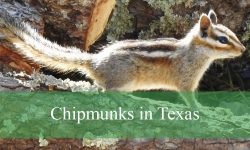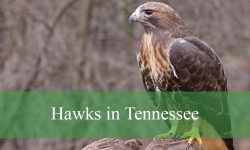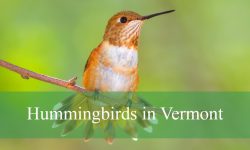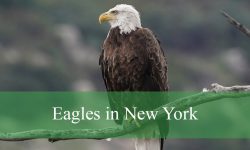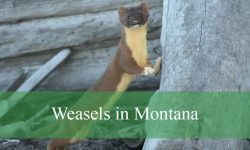Birdwatching in New Hampshire is always a rewarding experience, with its lush forests, wetlands, and mountain landscapes offering a home to countless species. Among these, jays stand out as some of the most intelligent, colorful, and charismatic birds. Known for their bold personalities, complex calls, and striking plumage, jays are a delight to observe whether you’re walking through the White Mountains or simply enjoying your backyard feeder.
In New Hampshire, only two jay species are considered regular residents. These are the familiar Blue Jay, often spotted in suburban neighborhoods, and the elusive Canada Jay, a bird of the northern forests. Both species are distinct in their behavior and appearance, yet they share traits of curiosity and adaptability. Learning how to identify them can make your birdwatching experiences far more rewarding.
This article provides a detailed guide to the two types of jays in New Hampshire, including their features, size, behavior, habitats, and unique facts. Whether you are new to birding or a seasoned observer, understanding these species will give you a deeper appreciation of New Hampshire’s birdlife.
Blue Jay in New Hampshire
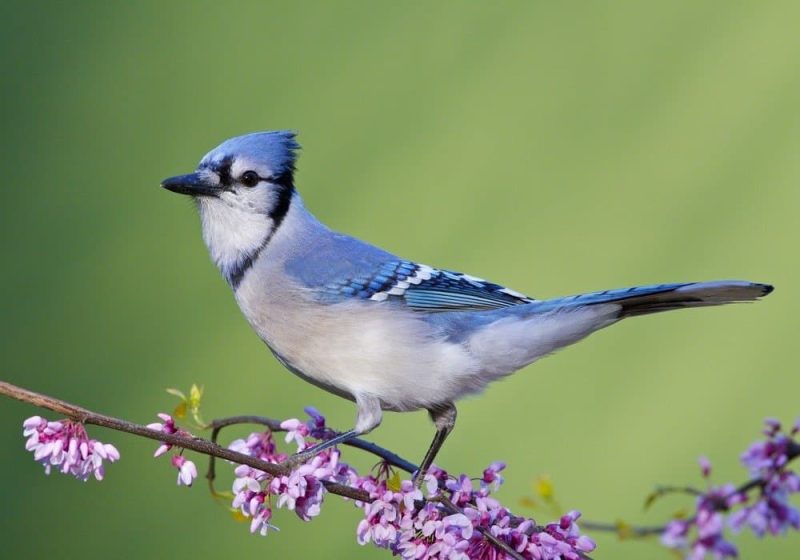
Characteristics and Identification
The Blue Jay is one of the most recognizable birds in North America, and in New Hampshire it remains a year-round resident. This bird is medium-sized, usually between 9 and 12 inches long, with a wingspan reaching 13 to 17 inches. Its plumage is striking, with vibrant blue feathers covering the wings, tail, and back, contrasted by a white face and underparts. A black collar across the throat and around the head gives it a sharp, defined look. Blue Jays also have a crest that they can raise or lower depending on mood, making them easy to identify at a glance.
In addition to its visual traits, the Blue Jay is well known for its vocal abilities. Its calls range from loud, harsh jeers to melodic whistles and even mimicked sounds. Some Blue Jays have been observed imitating hawks, likely as a way to scare off other birds from food sources. This versatility in communication makes them fascinating subjects of study and observation.
Behavior and Feeding Habits
Blue Jays are highly intelligent and social birds, often moving in family groups or small flocks. In the fall, they may gather in larger numbers, sometimes forming loose migratory flocks along New Hampshire’s river valleys and forested ridges. Despite their bold personalities, Blue Jays can be cautious and will carefully assess potential dangers before approaching feeders or open spaces.
Their diet is diverse and opportunistic. Acorns are a favorite food, and Blue Jays play an important role in spreading oak trees by burying acorns they do not retrieve later. In addition, they eat insects, seeds, fruits, and occasionally small vertebrates or eggs. At backyard feeders, Blue Jays are enthusiastic visitors, often preferring peanuts, sunflower seeds, and corn. Their habit of caching food for later consumption highlights their cleverness and adaptability.
Habitat and Range in New Hampshire
In New Hampshire, the Blue Jay is most commonly found in mixed forests, suburban areas, and even city parks. They are particularly noticeable in areas with oak trees, given their preference for acorns, but they adapt easily to a variety of habitats. Unlike some migratory birds, Blue Jays are present throughout the year, although some individuals may move southward during harsh winters.
During spring and summer, they become more secretive while nesting. Their nests are typically built in trees and consist of twigs, roots, and grass. Both parents share in the duties of raising the young, which hatch after about two weeks of incubation. Observing Blue Jays during this season requires patience, as they often hide their nests well to avoid predators.
Fun Facts About Blue Jays
One of the most fascinating aspects of Blue Jays is their intelligence. They are considered among the most brainy of backyard birds, capable of problem-solving and using tools in captivity. Their ability to mimic other birds and even human-made sounds adds to their charm. Another remarkable trait is their role as ecosystem engineers. By caching acorns and other seeds, Blue Jays contribute significantly to forest regeneration, sometimes planting oak trees miles away from the parent tree.
For birdwatchers in New Hampshire, Blue Jays offer endless entertainment and insight into avian behavior. Whether you spot them raiding your feeder, calling from the treetops, or escorting their young across the yard, they are a vivid reminder of the intelligence and adaptability of nature’s winged residents.
Canada Jay in New Hampshire
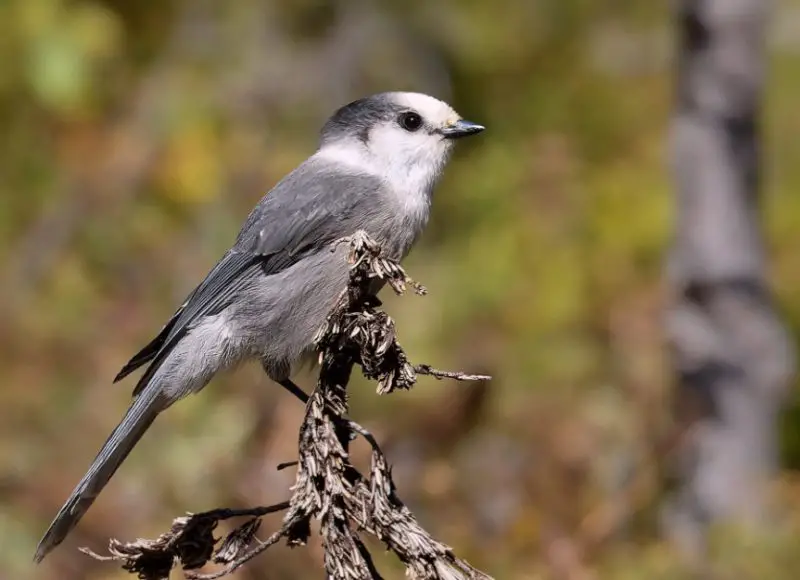
Characteristics and Identification
The Canada Jay, also known as the Gray Jay or Whiskey Jack, is a resident of New Hampshire’s colder northern forests. Unlike the brightly colored Blue Jay, the Canada Jay has more subdued plumage, with a soft gray body, lighter underparts, and a contrasting white face. A dark cap stretches across the top of its head, adding definition to its gentle appearance. These birds are slightly smaller than Blue Jays, averaging around 10 to 12 inches long with a wingspan of 18 inches.
Their appearance might not be as flashy, but their personality makes them unforgettable. Canada Jays are incredibly tame and curious, often approaching humans in the wilderness. They are sometimes called “camp robbers” because of their tendency to snatch food from picnic tables or hikers’ hands. This behavior, coupled with their quiet, whistle-like calls, makes them one of the most memorable birds of the northern woods.
Behavior and Feeding Habits
Canada Jays are resourceful and well-adapted to harsh conditions. Unlike many birds that migrate to escape winter, these jays remain in New Hampshire year-round, even during the coldest months. They rely on their food-caching behavior to survive, storing small pieces of food under tree bark or in crevices during summer and fall. These hidden reserves provide critical sustenance during long winters when fresh food is scarce.
Their diet is diverse, including berries, insects, carrion, fungi, and even small animals. Their boldness around humans often gives them access to easy meals, which is why they are legendary among campers and hikers. Despite their fearless nature, Canada Jays are also devoted parents, often breeding during late winter or early spring when snow still covers the ground. Their ability to raise chicks in such harsh conditions is one of the most remarkable feats in the bird world.
Habitat and Range in New Hampshire
The Canada Jay is mostly restricted to the northernmost regions of New Hampshire, particularly in spruce-fir forests and high-elevation woodlands. They thrive in boreal forest habitats, which provide the right combination of dense cover and food storage opportunities. For birders hoping to see one, the best chances are in the White Mountains, especially in areas with higher elevation.
Their distribution is strongly tied to cold climates. Climate change has raised concerns about the future of Canada Jays, as warming temperatures may spoil their cached food supplies and reduce their habitat range. As a result, seeing one in New Hampshire is always a special experience, offering not only the joy of spotting a rare bird but also insight into the delicate balance of northern ecosystems.
Fun Facts About Canada Jays
One of the most fascinating traits of the Canada Jay is its memory. These birds can recall thousands of stored food locations months after hiding them. They coat food items with sticky saliva to help them adhere to tree bark, an ingenious adaptation for winter survival. Their boldness around humans has also made them cultural icons, often appearing in folklore and earning nicknames like “Whiskey Jack,” derived from Algonquian languages.
Unlike Blue Jays, which are more widespread and common, Canada Jays are a treasured find for birders in New Hampshire. Their quiet presence in the northern woods, combined with their intelligence and remarkable resilience, make them an unforgettable part of the state’s avian diversity.
Best Time and Place to See Jays in New Hampshire
For those hoping to spot both jay species in New Hampshire, timing and location play an important role. Blue Jays are present year-round across the state, making them one of the easiest birds to observe. They are particularly active around backyard feeders in fall and winter, when natural food sources become scarce. Watching a group of Blue Jays gather around a feeder is one of the most reliable birding experiences in New England.
Canada Jays, on the other hand, require more effort to find. The best chances are in northern New Hampshire or at higher elevations in the White Mountains. These birds are present year-round but can be most rewarding to observe during late summer and fall, when they are actively caching food. Early spring also offers unique opportunities to witness their unusual nesting season, even while snow lingers on the ground.
Exploring spruce-fir forests, remote hiking trails, and mountain habitats increases the likelihood of spotting Canada Jays. Their curiosity often brings them close to people, sometimes perching just a few feet away. For birdwatchers seeking a true wilderness experience, encountering a Canada Jay in its natural habitat is one of New Hampshire’s great rewards.
FAQs About Jays in New Hampshire
Are Blue Jays common in New Hampshire?
Yes, Blue Jays are among the most common and widespread birds in the state. They are found in suburban neighborhoods, forests, and even urban areas.
Where can I see Canada Jays in New Hampshire?
Canada Jays are mostly limited to northern and high-elevation forests, particularly in the White Mountains. Spruce-fir habitats offer the best chances of spotting them.
Do Blue Jays migrate out of New Hampshire?
Most Blue Jays remain in New Hampshire year-round, though some individuals may move southward during severe winters. Their presence at feeders makes them easy to observe in every season.
Why are Canada Jays called Whiskey Jacks?
The name “Whiskey Jack” comes from Algonquian languages and reflects the bird’s presence in northern folklore. It is often used to describe their friendly and mischievous nature.
Do Jays help the environment?
Yes, both Blue Jays and Canada Jays play important roles in their ecosystems. Blue Jays help spread oak trees by caching acorns, while Canada Jays contribute to the balance of northern forests by scavenging and storing food.
Final Thoughts
The state of New Hampshire is home to many beautiful birds, but the presence of jays adds a special layer of intelligence and charm to its avian diversity. The bright, vocal Blue Jay and the quiet, curious Canada Jay represent two very different habitats and lifestyles, yet both are equally fascinating to observe. From backyard feeders to remote mountain forests, jays provide endless opportunities for learning and enjoyment.
Whether you encounter the bold calls of a Blue Jay outside your window or the soft whistle of a Canada Jay deep in the White Mountains, these birds serve as a reminder of the beauty and resilience of New Hampshire’s natural world. For birders and nature lovers alike, understanding and appreciating the two types of jays in New Hampshire offers a richer connection to the landscapes they call home.

